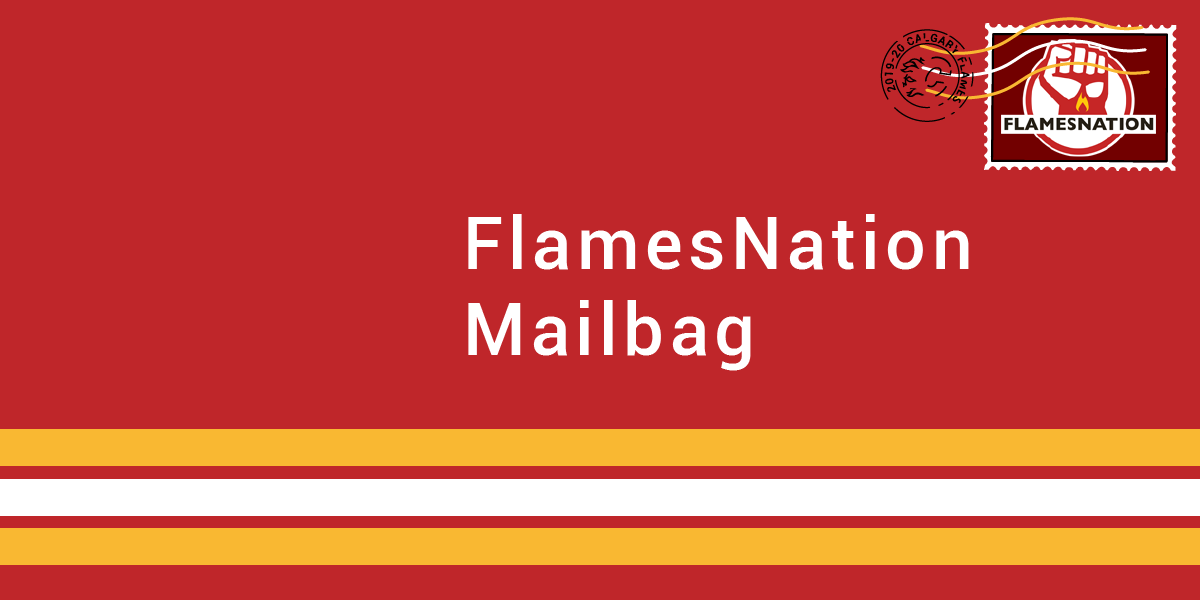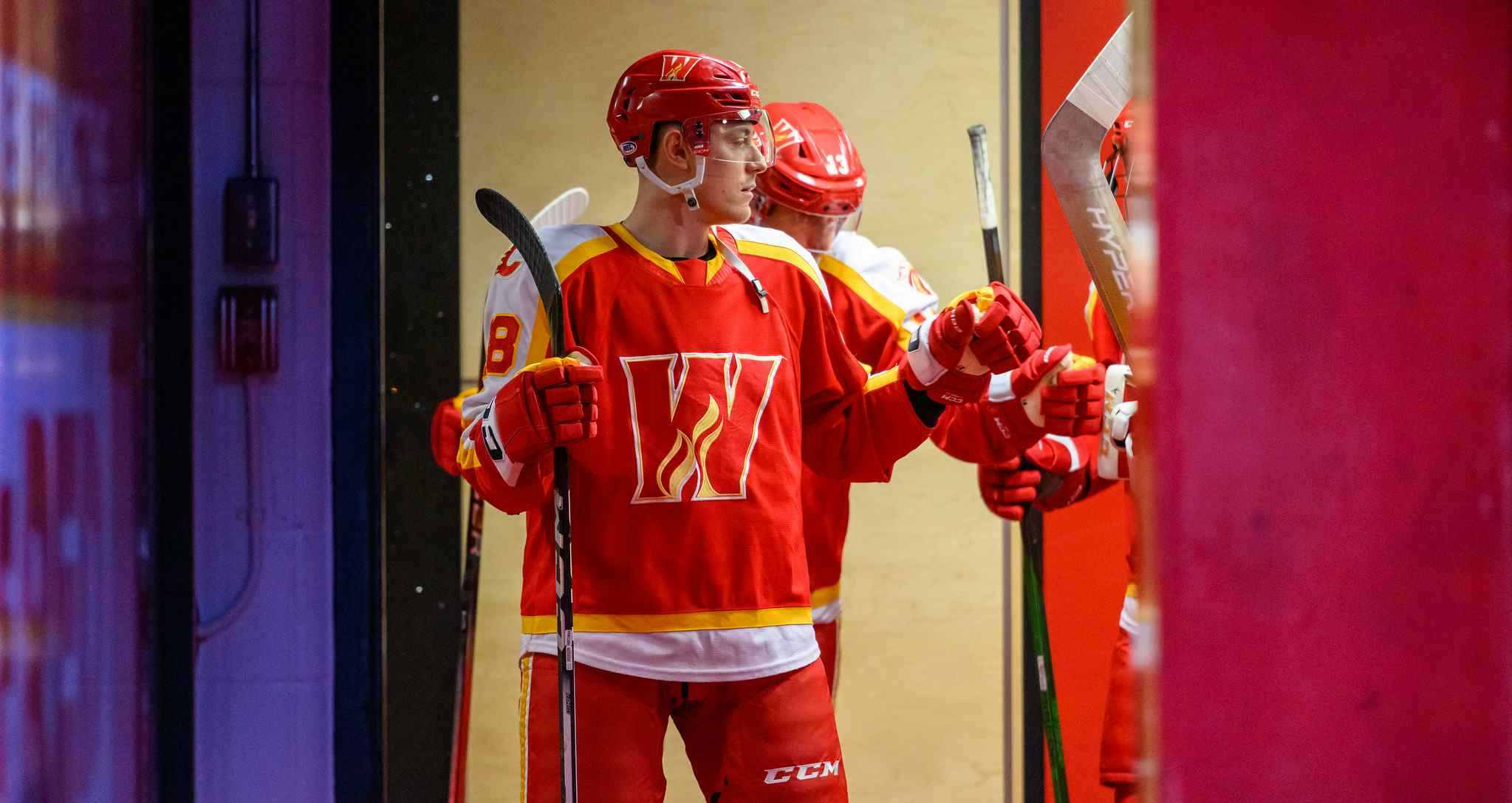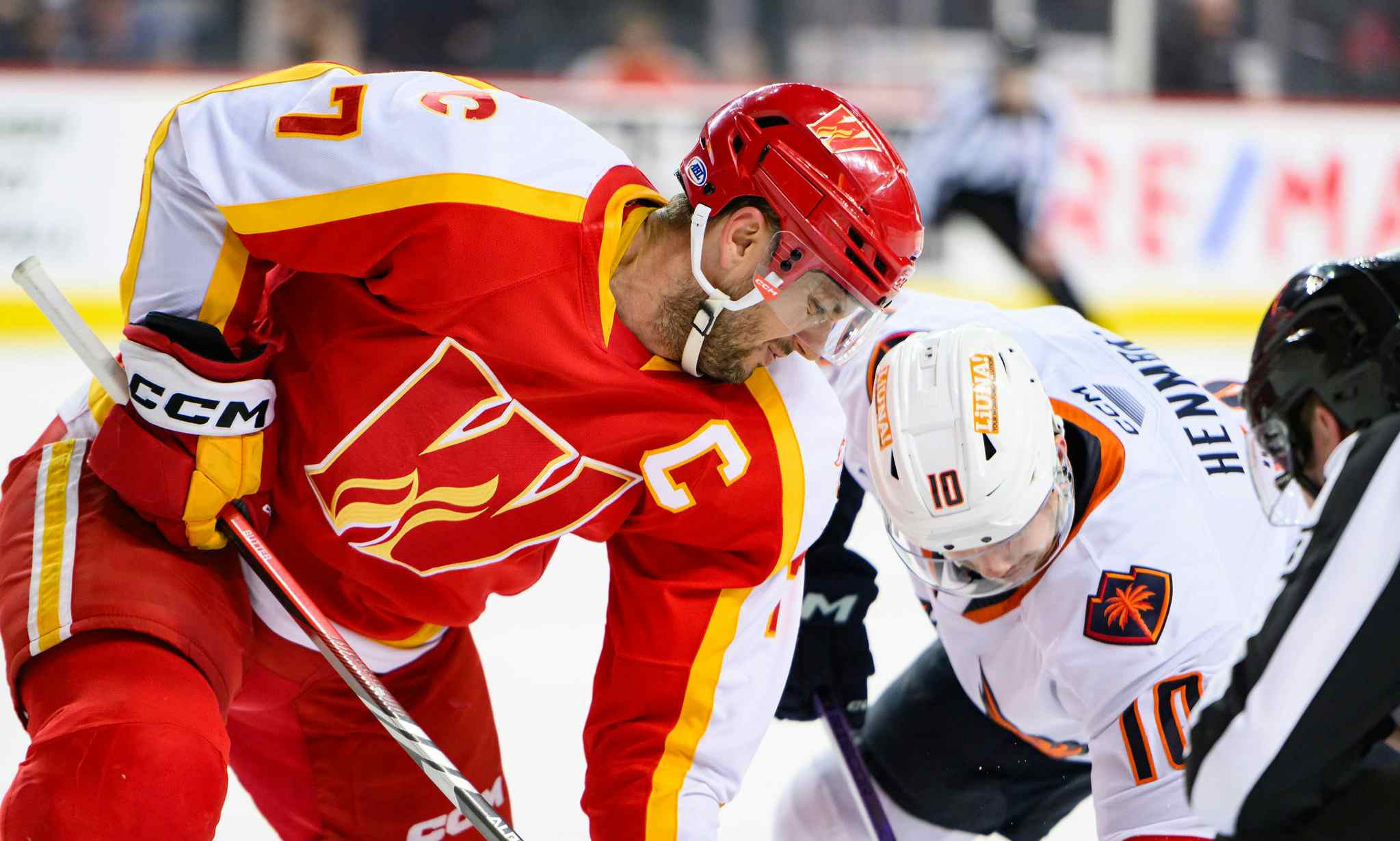FlamesNation mailbag: pre-season, part two

There’s a merciful 10 days left until Calgary Flames regular season hockey is back. That’s 10 more days for the Flames to figure out their depth positions, their goaltending, and also do that One Big Thing they’ve been working at all summer long.
As a side note, the pre-season is too long.
We might be getting a little ahead of ourselves.
Artyom Zagidulin has had a great preseason and everyone else but David Rittich has not, but I don’t think that changes the goaltending pecking order. The Flames aren’t going to rush Zagidulin to the NHL based on 90-ish minutes of great preseason action, and they aren’t going to ditch Cam Talbot this season after signing that contract. Of course, the turbulent nature of goaltending might just throw that into the garburator, but I think the Flames will do as much as they can to keep the status quo unless something absolutely needs to change.
I think the development plan, like it was with Rittich, is to ease him into the North American game in the AHL and then let him inch his way closer to the NHL. They had success with Rittich that way, and if they’re big believers in Zagidulin, they’ll follow that script.
They’ll ditch Jon Gillies in some way or the other.
There’s no trading him. No team would give up an asset for him as a player, and even if they gave up a conditional pick where the condition would never be met (i.e. the Flames trading away Tom McCollum a few years ago), a $750K salary for a prospect that’s going nowhere isn’t enticing. You can’t ditch him in the ECHL, as he’s off his ELC and can’t be assigned there without agreeing to it (and why would he do that).
Even if he’s better than his 2018-19 numbers, he’s not showing it in the pre-season while others (really, just Zagidulin) are. At 25 and not getting better, it’s time to move on.
Yes.
It’s a long time between now and then, but come July the Flames might have just Mark Giordano, Noah Hanifin, Juuso Valimaki, Rasmus Andersson, Oliver Kylington, Alexander Yelesin, and Carl-Johan Lerby under contract. That’s three (four, depending on Kylington’s season goes) defencemen who have at least one year of NHL experience under their belt. If Yelesin and Valimaki don’t progress as hoped, that’s putting a lot on the rest of your defensive corps.
They’ll have a few options available to them, however. The team will probably look to free agency to find some depth names, as there are some intriguing options out there for 2020, especially if they want to spend big. They’ll also focus heavy on it in the draft after going two drafts in a row without taking one, or at maybe even use their picks to acquire an already established NHL defenceman.
It all depends on prospect progression. If Andersson cements his place on the first pairing, Kylington establishes himself as an NHL regular, Valimaki bounces back without looking like he missed a year, and Yelesin adapts to North America quickly, the Flames look for depth defenceman. If things don’t go right, they’ll look for a big name free agent.
No, it will be a disaster.
Milan Lucic has never been much of a power play option, his season high for power play points being 25 in his first year with the Oilers. That was an outlier, however, as his previous high was 14 in 2010-11 and he’s only crossed double digits on the man advantage one other time in his career despite seeing PP2 deployment consistently throughout his career. Thus far in the preseason, he’s been used in the Troy Brouwer/Joe Colborne power play role of “being big and in front of the net,” to little effect. The Flames power play isn’t particularly great, and there’s absolutely no way Lucic can improve it.
He’s also not a penalty kill option, as his career total shorthanded ice time amounts to less than 30 minutes. Maybe he has a hidden affinity, but the Flames have better, proven options to use.
It depends on what you’re trying to achieve by moving Elias Lindholm to 2C. I’m sure it makes the Flames better down the middle by having four solid centres, but it doesn’t make the Flames’ right wing better, which is the issue that Lindholm was brought in to solve. Considering the drop off in quality from 1C to 2C versus the drop off from 1RW to 2RW, I’m not sure it makes the Flames better as a whole.
The major thing that’s preventing Lindholm from moving to 2C is the depth. The Flames would be shifting a player away from their weakest position on ice to one of their stronger positions. Elias Lindholm at 2C is an intriguing proposition, but with Michael Frolik and Austin Czarnik as the other two RWs on the roster, it’s dead in the water. The first line found an extra gear with Lindholm at right wing, and there’s no one on the roster who can replicate what he does.
If Dillon Dube can step up and be that guy (unlikely, even though I love him as a player), the Flames can experiment. Until then, don’t fix what isn’t broken.
Yes. HockeyDB reports that the Kansas City Mavericks drew an average of 4,859 last season compared to Stockton’s 3,690.
Why? Well, there’s a number of reasons, but the most likely one is sports team density. Kansas City has three major league outfits, the Royals (MLB), Sporting KC (MLS), and the Chiefs (NFL), and only one of those teams regularly plays into the winter. There’s not much nearby (St. Louis is a 3.5 hour drive away). By comparison, a sports fan in Stockton has the following options nearby: Raiders, 49ers, Sharks, Warriors, Giants, A’s, and Earthquakes. Basically, a person living in Kansas City really only has one option versus the plentiful in Northern California. Plus beaches and sunshine and other things that Kansas City presumably lacks (I’ve never been to Kansas City, but Google image search isn’t painting an interesting picture).
There’s also the league factor, which is pretty major. AHL teams are vassals of their NHL lords, having to pay tribute in the form of their best players. ECHL teams do also fall under control of their NHL affiliate, but NHL teams don’t bother with the majority of the roster, only stashing around two or three players in that league and letting the franchise determine the rest of the roster. That builds stability and continuity, which is better for the fans as it’s easier to cheer for players if the roster isn’t turned over every two or three years.
It’s still Dec. 1.
Ryan did the math a little while ago. If Matthew Tkachuk holds out on the Flames until the very last moment and eventually signs for an $8M AAV (I think it might be less, but let’s stick with it for simplicity’s sake), that would prorate to $11.1M, which is still doable but requires a big trade or two. For Brad Treliving’s sake, he has to hope a market has opened up by then.
If nothing opens up, well then the Flames are screwed and have to hope that Tkachuk takes a deal around or under $7M before the regular season gets started that makes in-season cap management difficult yet possible. I still believe a deal gets done before October, but if it doesn’t, the Flames will start facing the possibility of Tkachuk not playing for a whole season.
Recent articles from christian tiberi





